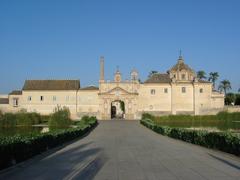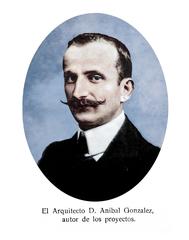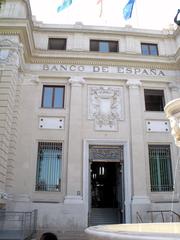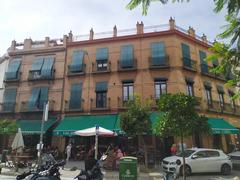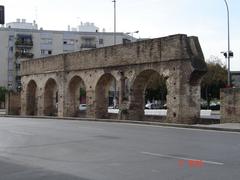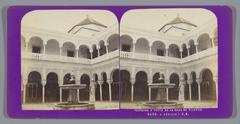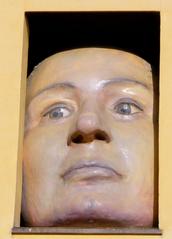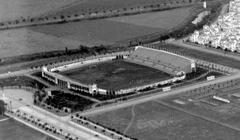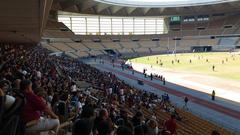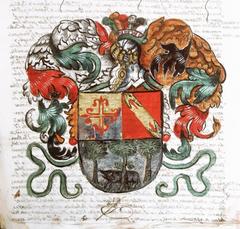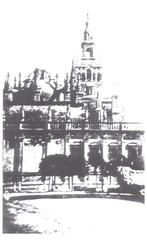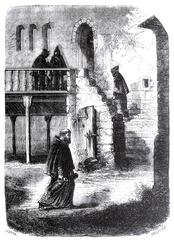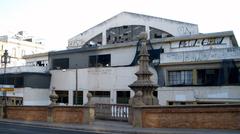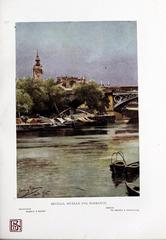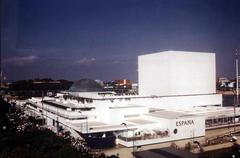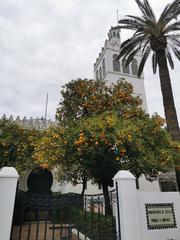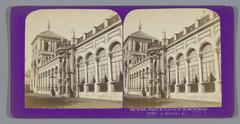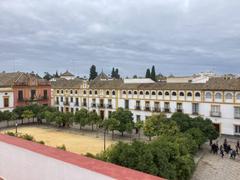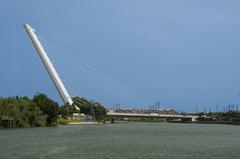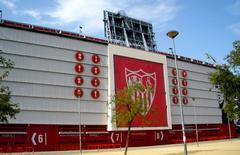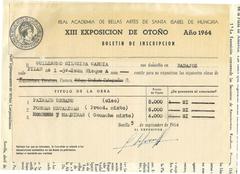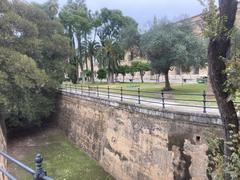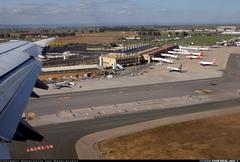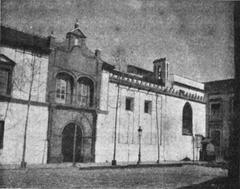Antiguo Convento de San Agustín Seville: Visiting Hours, Tickets, and Travel Guide
Date: 14/06/2025
Introduction
Nestled in the heart of Seville, the Antiguo Convento de San Agustín is a remarkable testament to the city’s layered past and evolving identity. Founded shortly after the Castilian conquest in the 13th century, this former Augustinian convent embodies Seville’s transition from Islamic to Christian rule and stands as a monument to centuries of religious devotion, artistic achievement, and community engagement (ABC Sevilla; Sevilla City Centre). Its Gothic origins, Baroque expansions, and neoclassical details weave a rich architectural narrative, while its ongoing restoration signals a new chapter for this historic site.
This comprehensive guide explores the convent’s origins, architectural evolution, cultural significance, and provides practical information for visitors, including up-to-date details on visiting hours, ticketing, accessibility, and nearby attractions. The guide also highlights the lesser-known Antiguo Convento de San Agustín in Cazalla de la Sierra, offering a broader perspective on the Augustinian legacy in Andalusia (Turismo Sevilla).
Table of Contents
- Historical Overview
- Visitor Guide
- Architectural Significance
- Cultural and Religious Impact
- Antiguo Convento de San Agustín in Cazalla de la Sierra
- Summary and Recommendations
- References
Historical Overview
Origins and Foundation
Founded shortly after the Christian reconquest of Seville in 1248, the Antiguo Convento de San Agustín—also known as the Casa Grande de San Agustín—became a key religious institution in the city (Wikipedia; Patrimonio de Sevilla). The convent was established by the Augustinian order with support from noble patrons, notably Arias Yáñez de Carranza and Doña Peregrina de Ayala, who donated their property for its foundation.
Architectural Evolution
Medieval Expansion
The convent quickly gained prominence, benefiting from royal favor and noble endowments. By the late Middle Ages, it had expanded significantly, rivaling other major Sevillian monastic complexes (Visitar Sevilla). The 14th-century main chapel and early Gothic structures reflect this period of growth.
Baroque and Neoclassical Transformations
Major transformations in the 17th century brought Baroque and neoclassical influences, seen in the renovation of the church and cloister. The Baroque cloister, attributed to Leonardo de Figueroa, and unique decorative motifs—including Mudejar and post-Columbian designs—are hallmarks of this era (Turismo Sevilla).
Cultural and Religious Significance
As the principal Augustinian house in Andalusia, the convent served as a spiritual and educational center. It fostered devotional traditions, including the veneration of the Cristo de San Agustín and Nuestra Señora de Gracia—devotions that remain influential in Seville today (Wikipedia; Visitar Sevilla).
Historical Challenges and Restoration
Over the centuries, the convent weathered adversity, including occupation and repurposing during the Napoleonic era and secularization following the Desamortización de Mendizábal in 1835. These events led to the loss of many original features, but significant elements—especially the cloister—survived. Recent restoration efforts aim to preserve and adapt the site for modern use as a luxury hotel and cultural venue (SevillaXM2; Area Investment).
Visitor Guide
Visiting Hours and Tickets
- Hours: The site is undergoing restoration, but guided tours of accessible areas, such as the Baroque cloister, are typically available Tuesday–Sunday, 10:00 AM–6:00 PM. Always confirm current hours with official sources.
- Tickets: Standard entry ranges from €8–€12; discounts are available for seniors, students, and children. Purchase tickets online or at the entrance. Search for “San Agustín Seville tickets” for the latest booking options.
Accessibility
Wheelchair access is provided to main areas, and guided tours can accommodate mobility needs. Contact ahead for special requirements.
Nearby Attractions and Tips
Located in the Nervión district near Plaza de San Agustín, the convent is accessible by public transport and close to the Puerta de Carmona and the Roman aqueduct remains. Combine your visit with nearby landmarks such as Seville Cathedral and the Alcázar. For the best experience, visit on weekday mornings and wear comfortable shoes due to uneven historic flooring.
Architectural Significance
Location and Urban Context
Situated just outside Seville’s medieval walls, near Puerta de Carmona on Calle San Alonso de Orozco, the convent’s placement reflects post-reconquest urban growth and the monastic pursuit of contemplation (Sevilla City Centre).
Key Features
- Gothic Foundations: Early structures feature pointed arches, ribbed vaults, and buttresses, with the refectory as a notable example (Dialnet PDF).
- Renaissance and Baroque Additions: The 16th-century main portal by Hernán Ruiz II (demolished in 1949, now being restored) and the Baroque cloister are architectural highlights (Marchena Secreta).
- Artistic Treasures: The church once held major altarpieces and works by Murillo, Bernardo Simón de Pineda, and Juan Valdés Leal.
- Claustral Complex: The “Casa Grande” cloister stands out for its arcaded galleries and central courtyard, with a prominent stone figure of Saint Augustine.
Current State and Restoration
Restoration, led by Cruz y Ortiz architects, focuses on preserving original elements while adapting the site for hospitality and museum-quality exhibits. Guided tours highlight the architectural evolution and surviving features (Marchena Secreta).
Cultural and Religious Impact
The convent’s history mirrors the evolution of Seville’s religious landscape. As a center for Augustinian education, missionary work, and local festivals—especially during Semana Santa—it played a vital role in shaping the city’s spiritual and cultural traditions (History Hit; Welcome to Seville). Its architecture, blending Gothic, Renaissance, Baroque, and Mudéjar influences, embodies the region’s intercultural heritage.
Antiguo Convento de San Agustín in Cazalla de la Sierra
Historical Background and Features
Located in Cazalla de la Sierra, about 80 km north of Seville, this convent was founded around 1588 on the site of a former hermitage (Turismo Sevilla). The building is notable for its brick espadaña (bell gable) adorned with ceramic spheres, a feature typical of rural Andalusian monastic architecture. The cloister retains its arcaded galleries and central courtyard, now integrated into the town hall.
Visiting Experience
- Location: Plaza Doctor Manuel Nosea, 1, 41370 Cazalla de la Sierra.
- Hours: Public access during town hall business hours (9:00 AM–2:00 PM, weekdays). Guided tours are available by arrangement.
- Tickets: No general admission fee; special events or tours may require tickets.
- Accessibility: The site is centrally located, with nearby amenities; accessibility may be limited, so check in advance.
- Nearby Attractions: Explore the Monasterio de la Cartuja, San Sebastián Church, local wine cellars, and the surrounding Sierra Norte Natural Park for hiking and rural tourism.
Summary and Recommendations
The Antiguo Convento de San Agustín is a jewel of Seville’s heritage, offering a vivid journey through centuries of religious, architectural, and cultural evolution (ABC Sevilla; History Hit). Whether you visit the evolving site in Seville or its rural counterpart in Cazalla de la Sierra, you’ll experience the enduring legacy of the Augustinian order in Andalusia.
Travel Tips:
- Always check official websites for current visiting hours and ticketing.
- Opt for guided tours for deeper historical insight.
- Combine your visit with nearby attractions for a comprehensive itinerary.
- Download the Audiala app for curated tours and real-time updates.
- Respect the historic setting and observe any photography restrictions.
References
- ABC Sevilla
- Sevilla City Centre
- History Hit
- Marchena Secreta
- Turismo Sevilla
- Welcome to Seville
- Dialnet PDF
- Patrimonio de Sevilla
- Area Investment
- Visitar Sevilla
Visual Elements:
For more travel guides, event updates, and curated tours, explore our related articles and follow us on social media.
